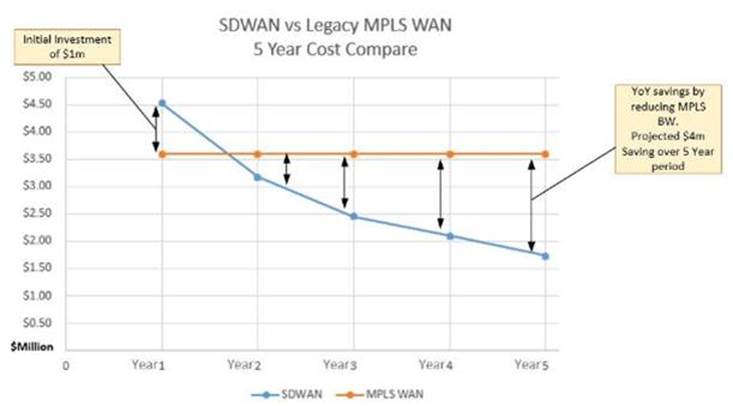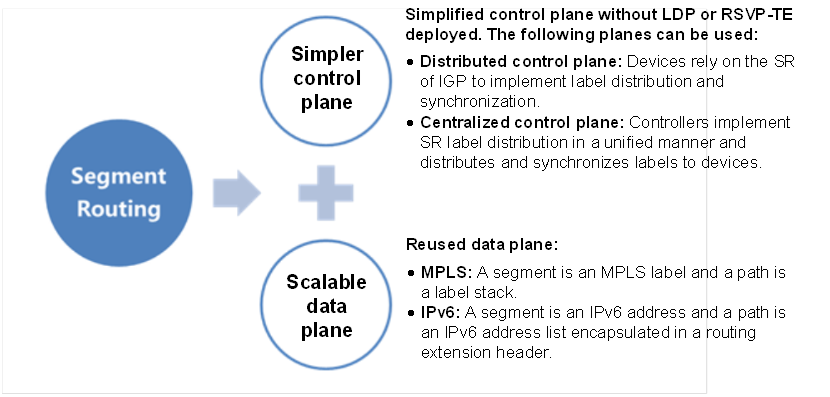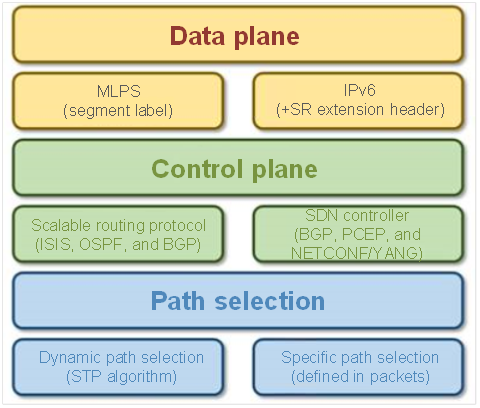Internet MAN/DCI Network Solution
While it may be common to hear that technology has revolutionized the world, but in fact, it is our thoughts that have changed the world. Technology turns our thoughts into reality. Now everybody knows that the future is digital. If we trace the origin of digitalization, we may find out that it started from cloud computing.
Cloud computing has different meanings and benefits from different perspectives. From the perspective of business operation, cloud computing changes fixed investments into operational costs, which greatly enhances the flexibility of business operation. From the technical point of view, cloud computing splits a large and complex system into small units, which makes the impossible possible and provides the basis for fast iteration of software and applications. From the macroscopic perspective of an economic operation system, cloud computing represents a brand new system architecture, that is, distributed architecture.
By dividing a large system into a series of small units which are independent from yet cooperative with each other, cloud computing can increase efficiency for each process and therefore increase efficiency for the whole system. It also allows us to connect and combine these small units into large, diversified, and sophisticated systems.
This concept has now found its way to all sectors of society. In the ICT field, various systems are evolving to the distributed architecture, such as distributed computing storage, distributed applications, distributed middleware, and distributed databases. As the basis for connecting these systems, distributed networks are also growing vigorously.
When SR encounters MPLS
01. Advantages and disadvantages of MPLS
Multiprotocol Label Switching (MPLS): It is first proposed to improve the forwarding speed of network devices. Compared with traditional IP routers, MPLS only analyzes the destination IP address contained in packet headers at the edge of a network instead of viewing them at each hop during data forwarding, which requires less processing time.
MPLS supports multi-layer labels, which means that labels can be nested without limits theoretically. In addition, the entry node of MPLS can convert the destination IP address into an MPLS label, so that subsequent forwarding is performed based on the label. With this feature, MPLS is commonly used in VPN, traffic engineering, and QoS, among others.
MPLS is also the basis for developing the label distribution protocol (LDP) to improve forwarding efficiency, as well as the Resource Reservation Protocol - Traffic Engineering (RSVP-TE), which is easy to manage.

Five-year cost analysis between traditional MPLS and SD-WAN networks
However, MPLS also has some disadvantages, such as high complexity, difficult O&M,, unavailable link load balancing, and high costs of devices. Moreover, as a protocol that has been in existence for more than 20 years, MPLS is difficult to find its way to current cloud environments.
02. When MPLS encounters SR
Segment routing (SR): It is a source-based routing protocol. In this protocol, the source node specifies a path for an application packet, and converts the path into an ordered segment list which is then encapsulated into the packet header. Therefore, the transit nodes along the path only need to forward data based on the path specified in packet header, achieving higher efficiency. With the IPv6 technology, SR has naturally evolved into SRv6.

Figure 5 Schematic diagram of segment routing features

Figure 4 Logical diagram of SR
Compared with traditional MPLS networks, SR features a simpler control plane and highly scalable data plane. While integrating the advantages of the MPLS technology, SR can adapt to the development of technologies such as IPv6 and SDN., providing a flexible and efficient control measure for SD-WAN networks. The SR technology is simple to use and easy to scale, and implements traffic scheduling and path optimization in a better way, and provides application-driven network services. It guarantees the quality of key services, balances traffic distribution, improves the efficiency of dedicated lines, and reduces line costs.
The SR technology also features a brand new management method named SR Policy, which is different from the traditional tunnel interface-based management method of the RSVP-TE.
SR Policy is a segment list that encodes any forwarding path of a data packet in a network. Segments contained in the list support IGP Segment, IGP Flex-Algo Segment, BGP Segment, and so on. If multiple paths exist between the source node and the destination node of the SR network, SR Policy can be properly used to select the forwarding path. This eases network management and planning of administrators, while reducing the forwarding pressure of the network devices.
03. Typical application scenarios of the SR technology
1. Real-time data transmission
Limited by the traditional WAN, a company with many branch offices usually suffers from unstable cross-border access caused by network latency, resulting in packet loss and slow mobile or PC display. With the SR technology, the SD-WAN network architecture can effectively help enterprises to synchronize multiple data centers, provide quality similar to that of physical optical cables, effectively improve transmission performance, and significantly reduce network rental costs.
2. Integrated office
The SR technology effectively guarantees the quality of telecommuting for enterprises, and helps enterprises to quickly deploy accelerated networks against the telecommuting impact to improve the quality of remote network transmission. It also meets the quality requirements for cross-region or cross-border office work scenarios such as video conferencing and remote desktop application, thereby improving business agility. In this way, it reduces the costs of dedicated lines and eases the O&M pressure for enterprises.
3. Live streaming and short video
By solving issues commonly seen in traditional network environments, such as latency, video stuttering, jitter, and packet loss, the SR technology provides support for live streaming, online education, and short video, and ensures smooth network environments for real-time interaction that requires a large amount of traffic, such as live streaming. In addition, the network architecture of SR+SD-WAN can also provide dynamic network acceleration, which makes up the deficiency of CDN.
4. Data disaster recovery
The intelligent routing capability of the SR technology supports not only fast data transmission, but also quick locating of faults with the help of SD-WAN controllers, which simplifies disaster recovery. Based on the SR technology, the active-active hot-standby mode with "data disaster recovery" + "line disaster recovery" can effectively ensure normal operation of networks and applications in case of problems. Both data retransmission and line switching are completed in minutes rather than hours to ensure that service data is backed up in real time and ensure smooth switchover to backup system.
Best practices of SRv6 and SR Policy for large CSPs
Integrating SRv6 with SR Policy has become common in the industry. As a pioneer of the next-generation network technology, H3C is the first to incorporate SR and its derivatives into products, and has achieved best practices in many large-scale cloud projects.
In multiple intra-city data center campus projects of a large CSP, each campus represents a separate available zone (AZ). To improve reliability, users of such CSP usually deploy services in multiple AZs. This requires core routers to use the SR technology for efficient and reliable traffic scheduling.
After doing some research, this CSP determined to use H3C S12500R/S12500CR that supports 100/400 Gbps interface interconnection to build the core MAN.
Schematic diagram of the intra-city and multi-center MAN architecture
Based on this network architecture, users can deploy the SR-TE technology in the MAN for intelligent traffic scheduling. In order to use multiple links to share load, H3C places parallel labels among core layer devices in the MAN.
Core layer and aggregation layer are located in the same autonomous domain, and the p2p ISIS neighbor relationship is established and the ISIS SR is enabled between the core layer devices and the aggregation layer devices in the MAN. With the aggregation layer devices acting as SR head nodes in the MAN, each group of those devices uses the Anycast label (which is a node label without the N flag, and the Node-SID flag bit of the prefix SID is 0, indicating that the prefix SID is one that has reached a set of SR nodes). The three-level hash traffic scheduling is allowed and traffic is scheduled through SR Policy.
By deploying the SR technology, H3C helps this CSP implement traffic scheduling of the campus backbone network in the data center. This technology helps implement the SR-TE policy while helping users get rid of restrictions posed by the SR-TE tunnel interface system. User traffic is accurately scheduled to different SR-TE paths based on the specified SLA, and multi-level hashing is allowed. This improves the bandwidth utilization of the campus backbone network in the data center, and enhances its reliability, fault tolerance, and robustness. It not only brings higher return on investment (ROI), but also further advances fine-grained network operation.
Building a distributed future with SR-based networks
One hundred years ago, the assembly line was created to incorporate finer division of labor and processes, greatly improving production efficiency. This has ushered in the advanced industrialization era.
One hundred years later, as the network system is becoming so complicated that we have to break it up and resort to more precise and efficient scheduling to build an agile, dynamic, and precise system. In the digital era led by cloud computing, the same also applies to organization cooperation that relies on unified platforms and industrial standards and to SR technology application within network architectures.
Those long divided shall be united, and those long united shall be divided. This is the way of the universe. As the world is embarking on a new path of growth, technology must truly become an impetus to future development.
As a leading provider of digital solutions, H3C Group, a subsidiary of Unigroup, has witnessed the evolution and development of network technologies numerous times. H3C will seize technological opportunities in the cloud era and make constant efforts to drive digital transformation for users with diversified products and solutions. In the digital future that is dominated by distributed systems, H3C will keep integrating new technologies into practices and lead the way in the industry.
Changing applications make the future full of uncertainty and infinite possibilities, and to better respond to these changes, H3C will never stop its innovation journey.



